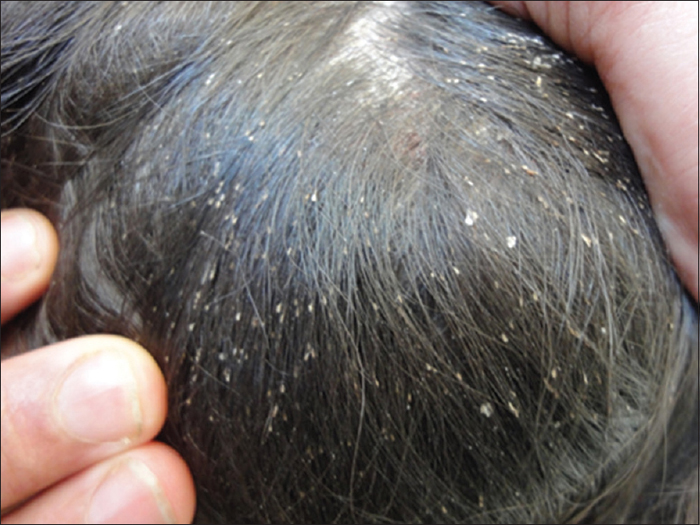
Two species of blood sucking lice of the order Anoplura have evolved to be obligate ectoparasites of humans: Pediculus humanus and Phthirius pubis. The two variants of Pediculus, the head louse and the body louse, are similar morphologically but distinct in ecologic niches on the body and the clinical manifestations of infestation. The body louse may have evolved from the head louse after humans began to wear clothes.
Causes of Pediculosis
Anyone may become louse infested under suitable conditions of exposure. Pediculosis is easily transmitted from person to person during direct contact. Head lice infestations are frequently found in school settings or institutions. Crab lice infestations can be found among sexually active individuals. Body lice infestation can be found in people living in crowded, unsanitary conditions where clothing is infrequently changed or laundered.
Symptoms of Pediculosis
Usually, the first indication of an infestation is the itching or scratching in the area of the body where the lice feed. Scratching at the back of the head or around the ears should lead to an examination for head louse eggs (nits) on the hair. Itching around the genital area should lead to an examination for crab lice or their eggs. Scratching can be sufficiently intense to result in secondary bacterial infection in these areas.
Diagnosis
Head Lice Demonstration of live adult lice, nymphs, or viable-appearing nits that are close to scalp, especially in hair above the ears. Detection combs may help. Dead nits are not diagnostic of active infection.
Pubic Lice Demonstration of live adult lice, nymphs, or nits in pubic area. Must carefully examine hair for nits as there may be only one or two. Also colonize other hairy areas, including axillae of adolescents, eyelashes of children, hair of head.
Body Lice Lice and eggs are found in clothing seams.
Treatment
Topically Applied Insecticides Ideally, should have 100% activity against louse and egg. Malathion kills all lice after 5 min of exposure, and more than 95% of eggs fail to hatch after 10 min of exposure. Synthetic pyrethroids, synergized pyrethrins, and malathion are most efficacious and safe. Lotion preparations are preferred; creams, foams, gels are also available. Shampoos should be avoided in that contact time is short, drug concentration low, insecticide penetration reduced when lice are immersed in water, and inappropriate applications favor emergence of resistance. The product should be applied to dry hair for various specified times in sufficient quantity; reapplication is recommended 7 to 10 days later.
Recommended Regimen
Permethrin or Pyrethrins Over-the-counter preparation include Nix, RID, A-200. Preparation applied to infested area(s) and washed off after 10 min. Not totally ovicidal, lacks residual activity; in that the incubation period of louse eggs is 6 to 10 days, should be reapplied in 7 to 14 days.
Malathion .5% in 78% isopropyl alcohol (Ovide). Applied to involved site for 8 to 12 h; binds to hair providing residual protection. Indicated in lindane-resistant cases. Should not be used in children younger than 6 months.
Alternative Regimen
Pyrethrins with Piperonyl Butoxide Applied to scalp and washed off after 10 min.
Lindane 1 % shampoo applied for 4 min and then thoroughly washed off. (Not recommended for pregnant or lactating women.) Not totally ovicidal and lacks residual activity; in that the incubation period of louse eggs is 6 to 10 days, the agents should be reapplied in 7 to 14 days. Retreatment may be necessary if lice are found or eggs are observed at the hair-skin junction.
Ivermectin .8% lotion or shampoo.
Systemic Therapy Oral Ivermectin 200 µg/kg; repeat on day 10.
Acquired Resistance to Insecticides Occurs worldwide, mainly to pyrethrins and pyrethroids; also to malathion. If resistance is suspected, an alternative agent should be used. Other alternatives include newer insecticides and oral ivermectin in cases of resistance to both pyrethroids and malathion.
References